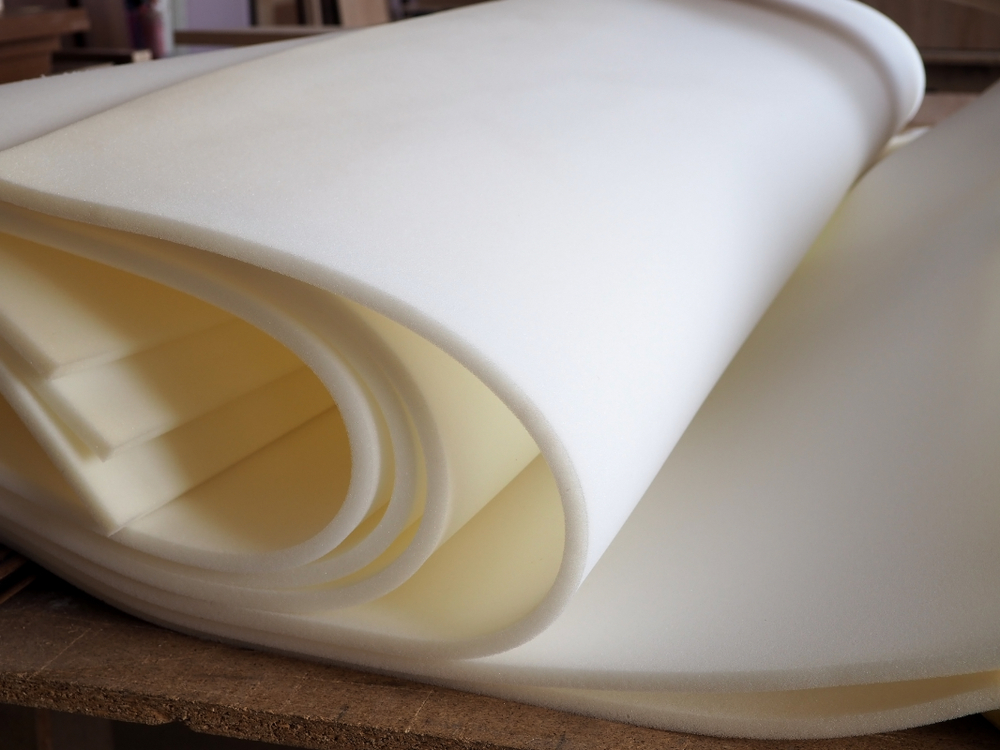Shaping in Smart Garments Today: Memory Polyurethane



Shape memory can be defined as the ability of a material to remember its original shape; i.e., when deformed into a temporary shape, it returns to its original condition by the action of external stimuli such as heat, light, pH, etc. The idea of shape memory was first introduced in the 1960s with the development of shape memory metal alloys (SMAs).
Shape memory polymers (SMP) are one such group of materials that was first developed in Japan in 1984 and since then have been explored for their benefits in the textile industry. This article talks about SMPs or polyurethane fabric - a shape memory polymer fabric that has attracted a lot of researchers in the last decade due to its various applications, especially for creating smart garments.
1. What is Memory Polyurethane?
Polyurethane is an organic plastic polymer composed of several organic units linked via urethane molecules. Most polyurethane does not melt upon heating and is therefore classified as thermosetting polymers.
Shape memory polyurethane (SMPU) is a class of polyurethane that is distinct from conventional polyurethane because they have a segmented structure and a wide range of glass transition temperature (Tg). If an SMPU is cooled from a temperature above Tg to a temperature below Tg, in presence of a mechanical load, then after removal of load, significant deformations anywhere in the range of 10-400% get locked into the polymer. These deformations and the original shape can be recovered by heating the polymer beyond Tg. The shape memory effect and the elasticity memory system effect of shape memory polyurethane make them a valuable candidate for today's intelligent material systems and garment industry. This is the reason why polyurethane fabric has become a preferred choice.
1.1 How does Memory Polyurethane Work?
Shape memory can be triggered by several stimuli such as heat, light, electricity, pH, and chemicals. SMPU is composed of incompatible hard and soft segments that separate on a molecular level to form a micro phase-separated structure. SMPU has two phases: frozen or net hard phase and reversible or switching soft phase. The hard microphase is a segment-rich microdomain, generally semi-crystalline, and imparts stiffness and reinforces strength to the material. The soft segment-rich or reversible microphase is responsible for the elastic behaviour of polyurethane and is usually amorphous with a glass transition temperature (Tg) below room temperature. A significant, reversible change in elastic modulus across the Tg makes shape change and shape retention a feasible possibility.
At temperatures above the glass transition temperature (Tg), the SMPU achieves a rubbery elastic state and can be easily deformed by applying external forces over a time frame. The deformation is retained when the polymer is cooled below its Tg, and the deformed shape remains stable. The pre-deformation shape can easily be recovered by reheating the SMPU to a temperature higher than the Tg.

2. Functions of Memory Polyurethane
SMPU has numerous applications in different fields ranging from textiles to biomedical. It is used to create artificial organs, smart catheters, drug-delivery systems, biosensors, auto-repairing automobile parts, smart textile, self-healing materials, and smart sutures.
In the garment industry, temperature dependency of water vapour permeability is an important aspect which is why SMPUs are highly valued. The fabrics coated or laminated with SMPU have higher water vapour permeability at higher temperatures and low water vapour permeability at lower temperature. Hence, they make an excellent choice for athletics and other weight exercises. The use of memory polyurethane in the textile industry has gained quite a popularity in the last eight years. Memory polyurethane has several implications in the garment industry, as described below.
2.1 Thermal and Moisture Controlling
In recent years, intelligent breathable garments have become one of the most desired products in the textile sector. Such clothes can be fabricated using memory polyurethane. This garment can regulate heat and moisture transfer to the wearer's body. The water vapour permeability of the SMPU changes accordingly with the human body temperature. The molecular free volume of the SMPU significantly increases when the body temperature is above the glass transition temperature (Tg) of memory polyurethane. This facilitates the transfer of water vapour and heat through sweating for comfort in the wearer's body. But the molecular free volume decreases when the body temperature is below Tg of the SMPU. This restricts both heat loss and moisture from passing through the garment. Thus, making the SMPU a good choice for maintaining stable body temperature.
SMPU can also be used in garments to protect its wearer from cold weather conditions. Memory polyurethane can be attached in the form of a laminate to various fabrics, upgrading them to a level of being able to adapt to the surrounding environmental conditions. When laminated between the adjacent layers of clothing, SMPU demonstrates waterproof abilities.
Moreover, different types of thermo-regulated products, such as blankets, sleeping bags, underwear, jackets, sports garments, socks, ski boots, helmets, etc., are created using memory polyurethane fabric.
2.2 Self-adaptability of Shape
Memory polyurethane fibres are utilised to produce self-adaptable garments that can easily regulate their structure with changes in environmental temperature. Though any fiber's shape memory effect is typically considered the change of its length, SMPU can take a range of forms after being incorporated into fabrics, such as bending, shrinkage, and change in thickness, depending upon the fabric structure. SMPU fabricated garments can be easily expanded to fit the wearer's body. Unlike elastic garments, the memory polyurethane fibres do not cause any strain on the wearer's body even when they are expanded. This can be attributed to the deformability and retention of SMPU fibres into temporary shapes, which diminishes the harsh pressure sensation to wearers. However, the garment made of spandex fibres generates adverse pressure on the wearer due to the high elasticity. Polyurethane fabric with improved comfort sensation is also used in creating intimates or undergarments and low-pressure socks.
2.3 Shape Retention
Cotton fabrics treated with SMPU are wrinkle-free and retain their original crease. In cotton materials, wrinkles are easily generated during wearing, storage, or washing due to the debonding and slippage of hydrogen bonds. To decrease the chances of wrinkling, most brands use chemicals to treat the garments during processing. But such clothes release formaldehyde. However, SMPU treated garments do not.
Additionally, SMPU finishing on cotton improves the overall mechanical strength of fabrics compared to the conventional durable-press finishing process. After repeated washing, the SMPU emulsion-treated cotton garment demonstrates an adequate wrinkle-free effect and can easily last hundreds of laundering cycles. SMPU-treated cotton fabrics also require low maintenance as they possess a more significant crease and pattern retention ability. The retention of a crease or pattern design on textiles provides aesthetic appeal to garments.
2.4 Smart Wettability
Smart wettability is one of the most desired properties in the garment industry. In most cases, brands achieve this by providing the hydrophobic surface on the fabric with periodic microsized or nanosized patterns. In addition to this, SMPU coating offers the same effects as the phase transformation of SMPU. If an SMP coating is used on a garment surface, it will demonstrate different shrinkage effects on temperature changes. Such SMPU-coated fabric can achieve a water-repellent effect or even control water-spreading behaviour.
3. Types of Memory Polyurethane Used in the Garment Industry

3.1. Thermal-responsive SMPs
Thermal-responsive memory polyurethane is one of the most extensively researched and used SMPs. Different materials such as solution, emulsion, film, fibre, and foam, are developed for suitable application under different circumstances. Typically, Tg is selected as the triggering temperature of this kind of SMPs, and the material shows its effect after reaching above this temperature. Such advantages make polyurethane fabric suitable for textile applications such as superior processability, mechanical properties, high deformability, and high recoverability.
3.2. PH-responsive polymeric hydrogels
This type of SMPU is pH-responsive polymeric hydrogel used in textiles to produce smart garments. This polymeric hydrogel is a three-dimensional macromolecular network containing a large amount of water within its outer structures. The degree of swelling of such gels increases or decreases based upon the transitional temperature. At a higher temperature, the hydrophobic interaction among hydrophobic segments of the gel increases while the hydrogen bonding weakens. The final result yields shrinkage of gel due to the hydrophobic interactions.
Conclusion
Memory polyurethane has become one of the most popular polymers in the textile industry and other advanced fields such as Bio-medics, engineering, and automobile. Its variability and retention of shape even after getting deformed is a property that the experts are readily studying. Polyurethane fabric has made the creation of smart garments much more effortless and feasible.



















